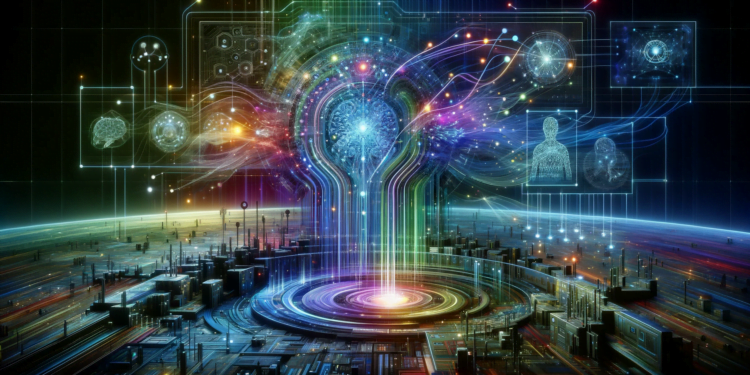Current Artificial Intelligence (AI) represents a groundbreaking amalgamation of essential theories intertwined with unprecedented algorithmic advancements, resulting in a technological ecosystem that evolves at a dizzying pace. This article delves into the more technical and advanced intricacies of AI, lifting the veil on emerging practical applications and provoking reflection on the future direction of this discipline.
Revisited Theoretical Foundations
The theoretical foundation of artificial intelligence is anchored in research conducted in fields such as mathematical logic, Bayesian statistics, decision theory, and computational cognition. Lately, these underpinnings have been tested by the emergence of more complex deep learning models that require a reconceptualization of what we understand as ‘learning’.
Deep Neural Networks (DNNs) models, propelled by the availability of large data volumes and computational capacity, have demonstrated exceptional feature extraction capabilities and generalization from labeled examples. These advancements underscore the importance of understanding the interaction between network architecture, activation functions, and optimization algorithms like Gradient Descent and its adaptive variants, including Adam and RMSprop.
Algorithmic Innovations
Within the spectrum of algorithmic innovations, Transformer models have taken center stage, particularly in natural language processing (NLP), thanks to their ability to capture long-distance dependencies through attention mechanisms. These models have laid the groundwork for developments such as GPT-3 and BERT, which have altered the landscape of potential linguistic applications.
In parallel, reinforcement learning, evidenced in algorithms such as DQN, PPO, and A3C, has enabled notable progress in unstructured environments and zero-sum games, highlighting the AI entities’ capacity to optimize strategies in real-time and adapt to intelligent adversaries.
Constraint-based programming is another area of notable development, where recent algorithms have improved efficiency in solving constraint satisfaction and optimization problems, which are critical for planning and automated decision-making.
Emerging Practical Applications
The aforementioned innovations have paved the way for a variety of transformative practical applications. AI algorithms are behind automated detection and diagnosis in medicine, leveraging the DNNs’ ability to interpret medical images with precision that matches or surpasses that of human experts in some cases.
Autonomous systems, such as vehicles and drones, are made possible through the fusion of multi-modal perception techniques, constraint-based planning, and reinforcement learning, enabling them to navigate and perform complex tasks independently in dynamic environments.
Comparative and Future of AI
Contemporary AI represents a remarkable evolution compared to the knowledge-based systems and genetic algorithms of previous decades. Current advancements are characterized by richer representations and end-to-end learning that allows, for instance, a single Transformer model to train simultaneously on multiple language tasks with extraordinary results.
Looking to the future, areas such as explainable AI (XAI) are emerging, where the goal is to develop models that not only act optimally but can also justify their decisions in a way that humans can understand. This is critical for applications in sensitive domains such as medicine and justice.
Case Studies
A case study exemplifying current AI capabilities is DeepMind’s AlphaFold system, which has made substantial advances in the prediction of protein three-dimensional structures. AlphaFold integrates deep learning with knowledge of structural biology, demonstrating a synergy between vast data sets and human scientific intuition.
Another illustrative example is the use of Waymo’s autonomous vehicles, which apply a combination of visual recognition, planning, and deep learning to navigate urban and suburban streets, adapting to traffic conditions and other drivers’ behaviors with unprecedented safety and efficiency levels.
Conclusions
Advances in AI are impacting all spheres of human activity, democratizing access to complex solutions and enhancing creativity in domains traditionally dependent on exclusive human expertise. We are witnessing not only an expansion in technical capabilities but also a redefinition of the paradigm of collaboration between humans and intelligent machines.
The future promises even more integrated AI, where the conjunction of multiple disciplines and the extrapolation of theories to practical applications remain the driver of an unparalleled technological era. The scientific community is challenged to build on these foundations a future where AI systems act ethically, transparently, and in service of global human well-being.






















